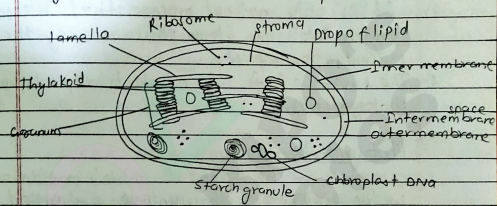Photosynthesis
Photosynthesis is the process by which green plants use carbon dioxide (CO₂) and
water(H₂O) in the presence of sunlight to synthesize their food. Through the process of
photosynthesis, the photons are obtained from. light energy and converted to chemical
energy.
The overall reaction of Photosynthesis is :-
 Carbon dioxide and water are the raw materials for photosynthesis. CO₂ is obtained from
air where as H₂o is obtained from soil, chlorophyll has got an ability to trap sunlight
which provide energy for chemical reaction. As the result of chemical reaction, simple
sugar like glucose is formed as a product. The glucose is further changed into stored
carbohydrate such as starch.
Carbon dioxide and water are the raw materials for photosynthesis. CO₂ is obtained from
air where as H₂o is obtained from soil, chlorophyll has got an ability to trap sunlight
which provide energy for chemical reaction. As the result of chemical reaction, simple
sugar like glucose is formed as a product. The glucose is further changed into stored
carbohydrate such as starch.
Oxygen gets evolved as a by-product of photosynthesis
